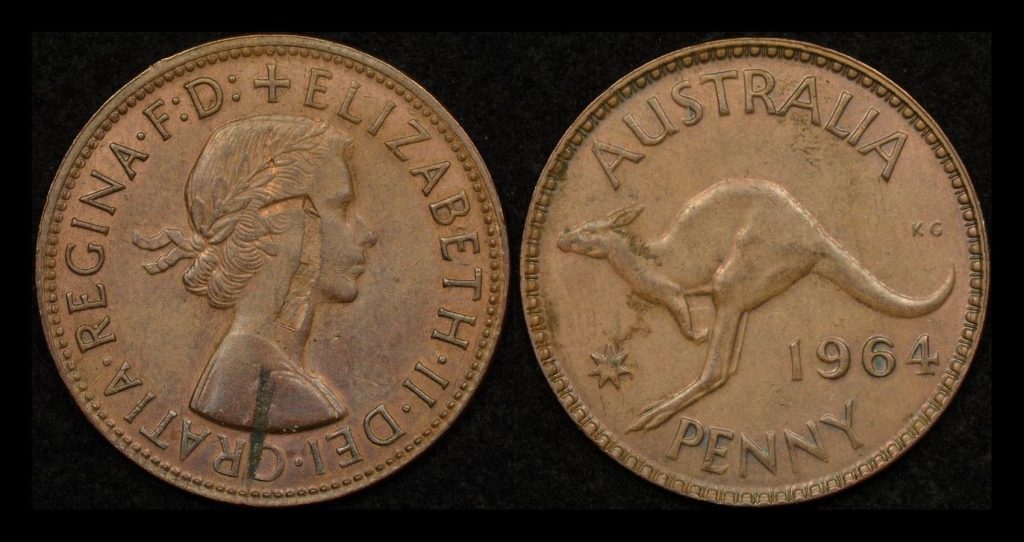As originally published in Australasian Coin and Banknote Magazine in July 2022.
What Went Wrong -error coins that escaped the Mint
We’re sure that coin producers do their best to keep the process of making coins a neat and tidy one. However, as with most manufacturing, contamination can and does occur through most of the processes needed to make a coin. When a contaminant gets into the coin press and is struck along with the coin, we get what is known as a ‘strike through error’. That is, the coin has been struck through some sort of foreign material. We’ve seen many strike through errors over the years, the most common are coins struck through oil or grease. Less common are coins struck through scrap metal, and that’s what you can see in Figure 1.
What you’re looking at is a 1964 penny struck in Melbourne. It’s in quite a nice grade as most are, but on the obverse portrait of the Queen you’ll see a peculiar impression that looks for all the world like the number 7 stamped into the coin. If you examine the image closely (Figure 2), you’ll see that the surface of the impression is slightly textured and in the corner there appears to be a fold. It doesn’t take too much imagination to think of a longish strip of thin metal that has been folded somehow getting into the blank penny supply and being fed into the coin press along with a coin blank. The blank is struck with the stray metal strip in the way leaving an impression of the strip. When the coin is ejected the two part company and you’re left with the coin we’re discussing.
Where did the scrap of metal come from? We’ll never know for certain but there is one very strong possibility. The strip was a detached planchet flaw. A planchet flaw is a piece of improperly bonded metal that is attached to a coin blank. It’s improperly bonded because of some sort of impurity in the metal the blanks are made from. Sometimes planchet flaws are very poorly bonded to the coin blank and detach to potentially get in the way of a coin when it is struck. Coincidentally there’s an example of a planchet flaw on this very coin. On the obverse of the coin running from the Queen’s shoulder down to the G of GRATIA is a wedge-shaped dark feature, which is, in fact, a planchet flaw!
What a great error of this type to put into one’s collection. It’s in decent condition with all design elements clear and virtually unworn, the strike through is large and obvious, and the shape of the strike through is interesting. These are all criteria that collectors should take into account when purchasing error coins of this type.
Mark Nemtsas and Kathryn Harris own and run ‘The Purple Penny’ coin shop in Adelaide and are passionate about error coins.




